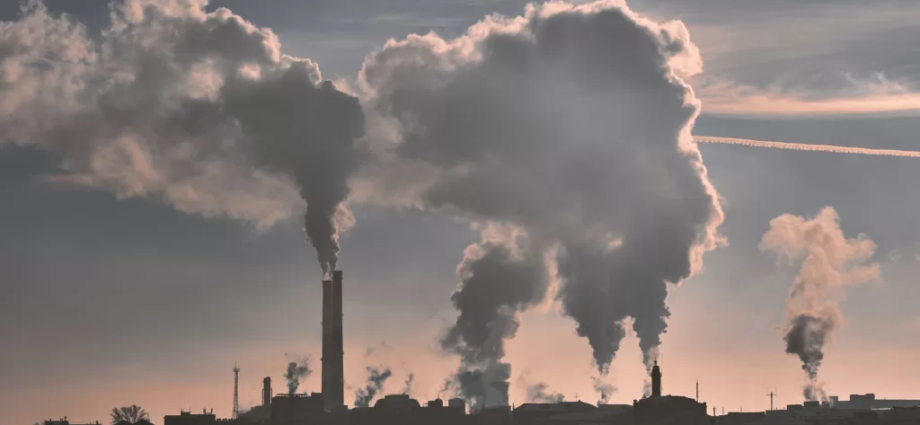
Direct air capture of carbon dioxide faces political and technological challenges but ambitious targets have been set in fighting the climate crisis.
By Deanna D’Alessandro, University of Sydney and Sam Wenger, University of Sydney
October 31, 2023
The United Nations Climate Change Conference presents the world with an opportunity to showcase technologies that might limit global warming to well below 2 degrees Celsius.
Carbon dioxide removal is on the agenda at COP28 as a potential solution. The Intergovernmental Panel on Climate Change has stressed carbon dioxide removal as a key component of the global strategy.
The panel recognises that, while efforts to reduce emissions at their source are essential, some sources of greenhouse gas emissions — such as in the heavy-duty transport and agriculture sectors — are hard to eliminate.
There are two main ways to remove carbon dioxide. The first is by enhancing natural sinks: storing carbon in soils, planting more trees or enhancing ocean-based carbon sinks.
The other is using technologies like direct air capture, a complementary approach that directly removes carbon dioxide from the atmosphere. This could help achieve the ambitious emissions reduction targets necessary to avoid catastrophic climate change.
In direct air capture, air is pushed through filters that remove carbon dioxide from atmospheric gases like nitrogen, oxygen, argon and water vapour.
After the process, the air has a much lower concentration of carbon dioxide and that which is captured is collected for removal or more processing.
Direct air capture is different from carbon capture and storage.
Carbon capture and storage focuses on directly capturing emissions from large industrial sources like power plants before they are released into the atmosphere.
Upon capture, the carbon dioxide is transported and kept underground in geological formations, preventing it from contributing to greenhouse gas accumulation.
In contrast, direct air capture allows emissions from dispersed sources— considered hard to abate — to be targeted.
Direct air capture is difficult because of the extremely dilute nature of carbon dioxide in natural air. It comprises just 0.04 percent of molecules in the atmosphere, compared with the relatively higher concentration in carbon capture storage applications — typically 10-15 percent.
It’s one factor making it extremely difficult to design a chemical process to selectively capture carbon dioxide in a highly reversible way while using commercially available materials and requiring minimal energy.
The most conventional early processes rely on temperature and pressure swings— or a combination of both—for filters to react with dilute carbon dioxide at ambient temperatures and pressures.
Once the filters are saturated, heat and a vacuum, or both, are applied to the filters, releasing the carbon dioxide-rich gas.
The energy required to capture and release carbon dioxide now limits the technology and should be a focus for improvement.
The International Energy Agency says it hopes to remove 85 million metric tonnes of carbon dioxide by the end of the decade through direct air capture. By 2050, that number skyrockets to 980 million metric tonnes.
There are 18 operational direct air capture facilities, with Iceland housing the biggest. There are several megaton-scale facilities planned in the United States.
The US has offered USD$3.5 billion in government grants, compared with the United Kingdom’s pledge of USD$124 million for direct air capture research and development.
While commercial direct air capture plants have started operating over the past few years, they are relatively expensive to operate, costing between USD$600 and USD$1000 for each tonne of carbon dioxide.
More extensive research on novel materials, greater economies of scale and experience could see that cost reduced, with future estimates near between USD$125 and USD$335 per tonne of CO2 for a large-scale plant built today.
The aim would be to significantly lower the process cost in a similar way other climate technologies like lithium-ion batteries and photovoltaic solar cells became cheaper.
Direct air capture also faces several social and political hurdles.
Scaling a novel technology to gigaton-scale within decades requires a whole-of-society approach.
It requires governmental support to commercialise the technology, a skilled workforce to manufacture, operate, maintain and improve it, expansive supply chains and a greater understanding of how the technology will affect local communities.
Professor Deanna D’Alessandro is a Professor at the Schools of Chemical & Biomolecular Engineering and Chemistry at the University of Sydney. She is the Director of the Net Zero Initiative with the Faculty of Engineering.
Sam Wenger is a PhD student focused on electrochemical direct air capture at the University of Sydney in the School of Chemistry.
Subscribe to our newsletter.
Originally published under Creative Commons by 360info™.

